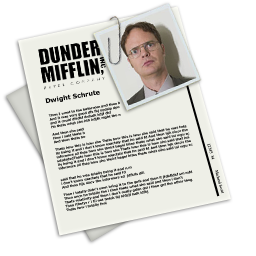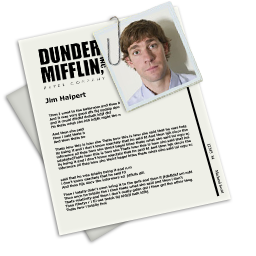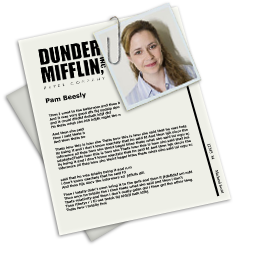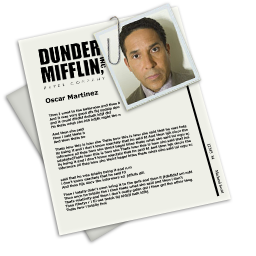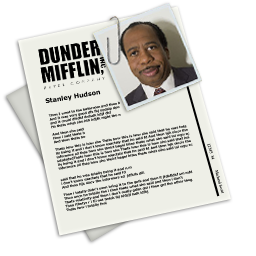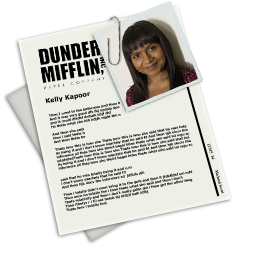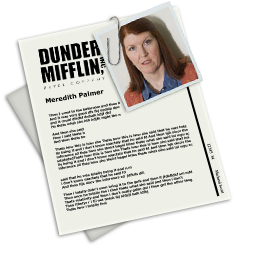The Economics of The Office
Learning economics from the world's best boss
Huge Turnaround for Profit
Dwight corners the market on Princess Unicorn dolls! This is a good opportunity to discuss the relationship between expected future prices and changes in demand. Dwight knew that the demand for these dolls would increase as Christmas drew closer. Advanced students should be able to draw a supply and demand graph for this market and see that in the very short run the supply of this good is perfectly inelastic in the Scranton area. This makes the profit opportunity for Dwight even greater.
Season 5 Episode 11 "Moroccan Christmas"
Information and Market Efficiency (G14) Microeconomic Behavior: Underlying Principles (D01)
FaLaLa CaChing
Dwight corners the market on Princess Unicorn dolls! This is a good opportunity to discuss the relationship between expected future prices and changes in demand. Dwight knew that the demand for these dolls would increase as Christmas drew closer. Advanced students should be able to draw a supply and demand graph for this market and see that in the very short run the supply of this good is perfectly inelastic in the Scranton area. This makes the profit opportunity for Dwight even greater.
Season 5 Episode 11 "Moroccan Christmas"
Information and Market Efficiency (G14) Microeconomic Behavior: Underlying Principles (D01)
Broke
Using this clip as a starting point, we can demonstrate and discuss the difference between fixed costs and variable costs.
The Surplus
It's the last day of the fiscal year at Dunder Mifflin and Michael must spend the last $4300 in his budget or lose it for all subsequent years. This clip illustrates the unintended consequences of perverse incentives.
Season 5 Episode 10 "The Surplus"
The Surplus: Part Two - Rent Seeking Behavior
Oscar and Jim team up with a few other employees to lobby for a new copier. Pam, Stanley and Meredith form a group to lobby for new chairs. Michael is the World’s Best Boss, and also the one who ultimately decides if the $4300 will be spent on new chairs or a new copier. Oscar and Jim waste valuable resources, time that they could spend working, to take Michael out for lunch to convince him they need a new copier. When they get back from lunch, Pam diverts time away from her job and toward chair-seeking efforts. Others go out of their way to open doors for Michael and bring him hot chocolate. All the employees allocate resources in an attempt to “win” the rent. These rent-seeking efforts and expenditures result in negative social value. Thanks to Lizzie Banks, an econ major at the University of Virginia, for suggesting this clip.
Season 5 Episode 10 "The Surplus"
Cyclical vs. Structural Unemployment
Michael quit his job (frictional unemployment) but finds out that the economy is in a severe downturn (cyclical unemployment). This demonstrates the idea that most workers are more willing to engage in a job search when cyclical unemployment is high ceteris paribus.
Season 5 Episode 14 "Two Weeks"
Buyout
Michael realizes that he is in a better bargaining position than he might have earlier realized. Even though his strategy is irrational because he should be desperate to sell, he takes a game theory optimal approach because David Wallace’s utility function does not match that of Dunder Mifflin as a company. We could also label this clip as a demonstration of the “Principal Agent Problem” because David is the principal acting on behalf of all Dunder Mifflin Shareholders.
Microeconomic Behavior: Underlying Principles (D01) Production and Cost (D24)
Cyclical Unemployment
Pam discusses her difficulty finding a job in a difficult economy.
Michael Quits
Michaels quits his job with Dunder Mifflin. This example of frictional unemployment can be contrasted with examples of cyclic and structural unemployment that are shown later in the season. Thanks to Allison Anthony from the Maggie L. Walker Governor's School for suggesting this clip.
Season 5 Episode 20 "New Boss"
